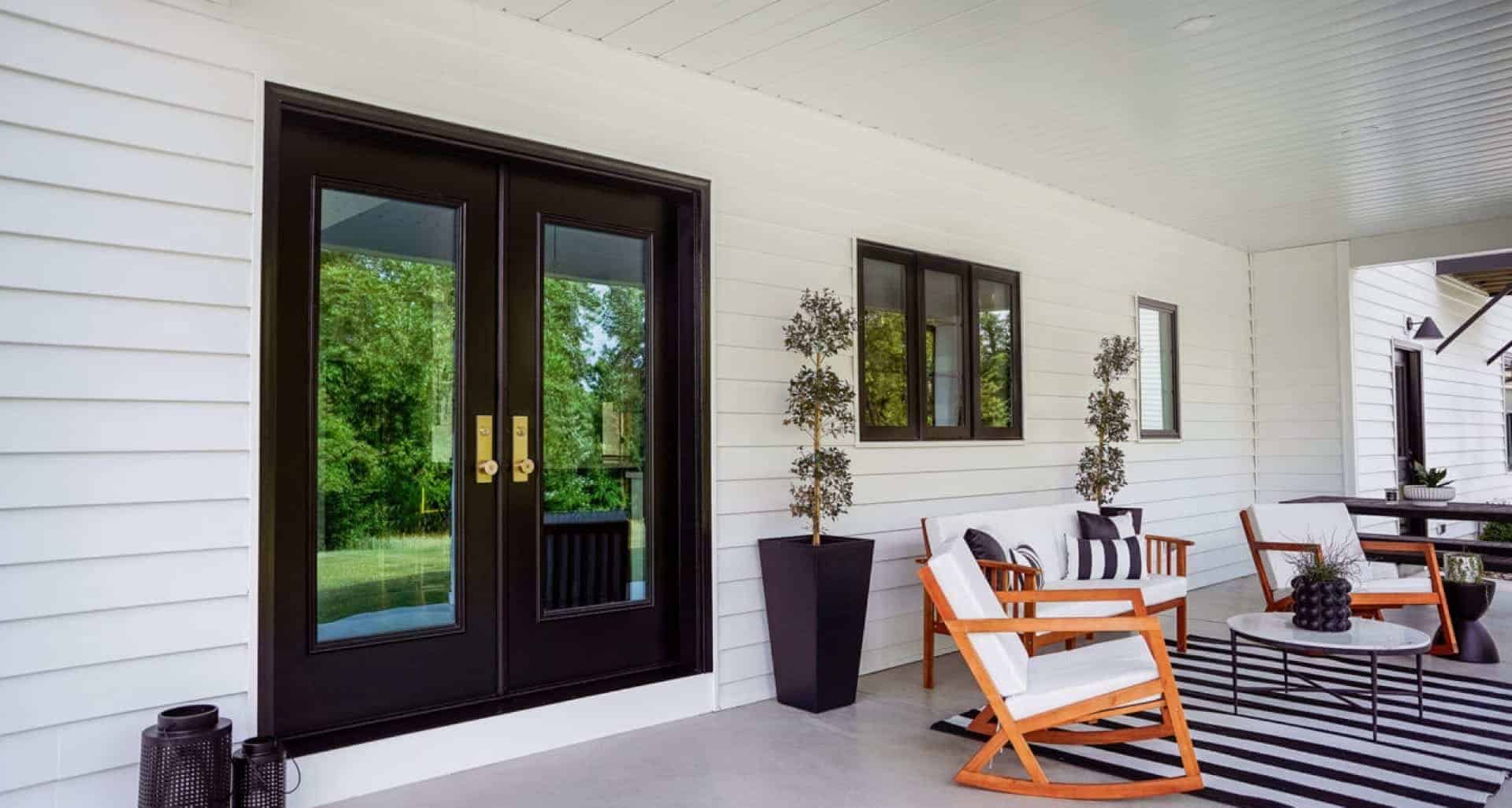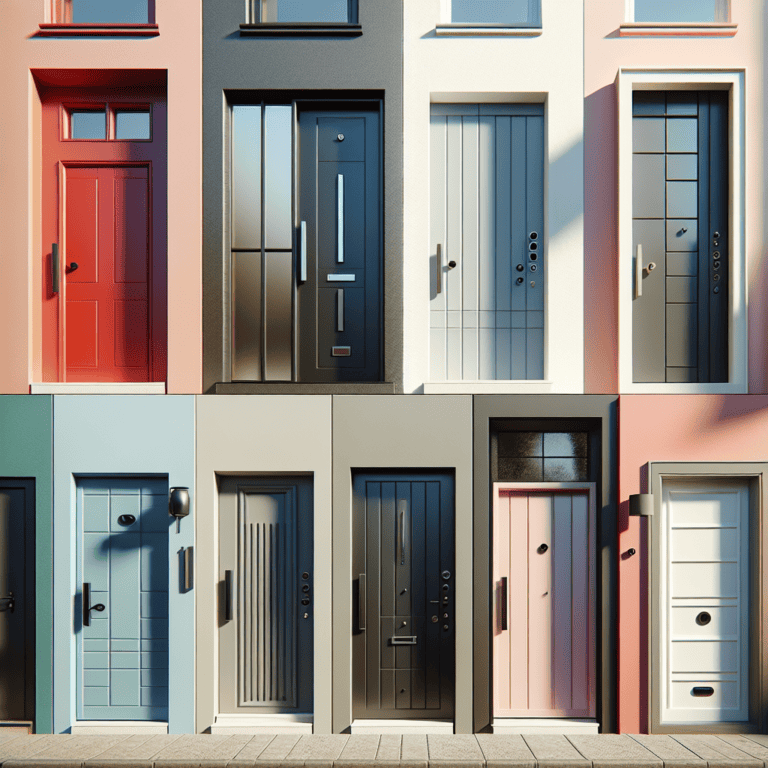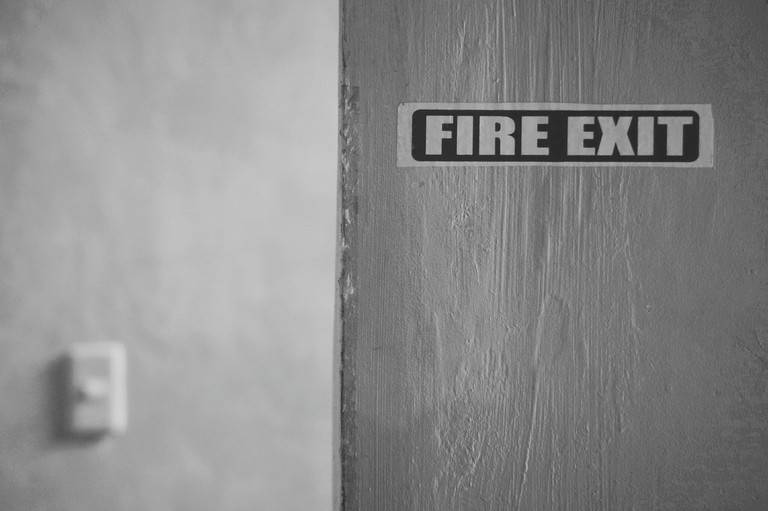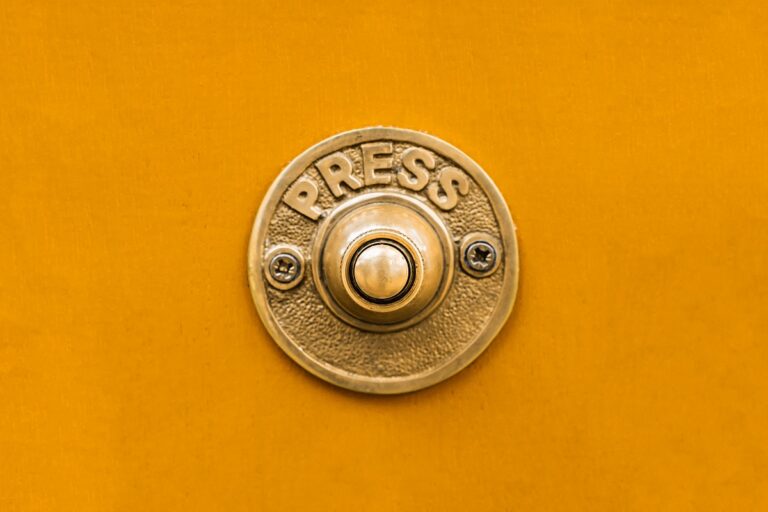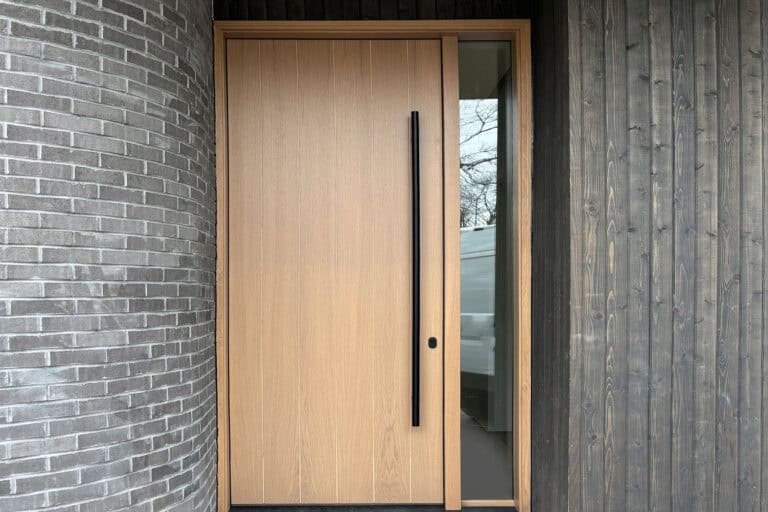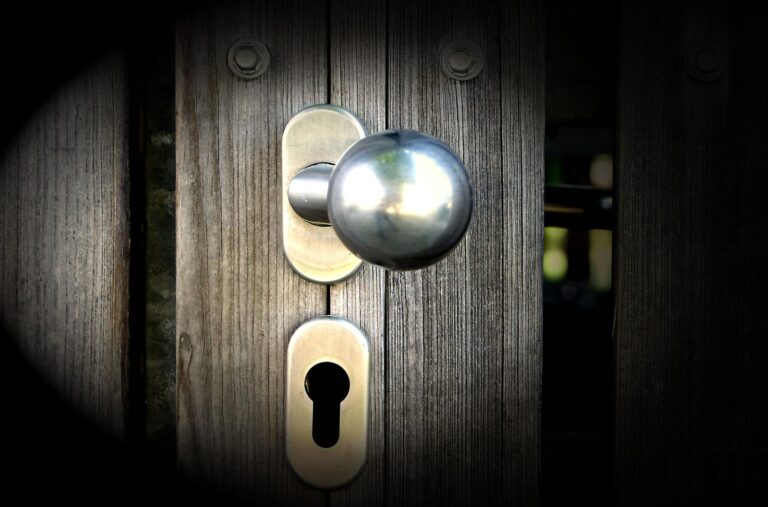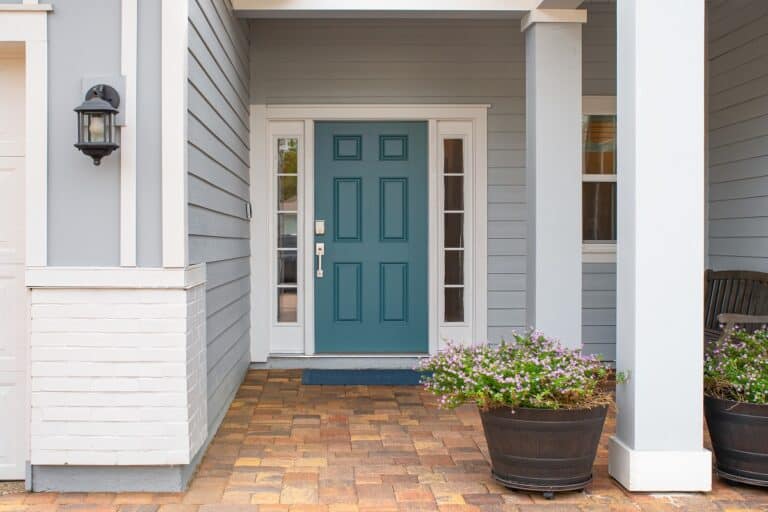Introduction: Fiberglass vs Steel Doors
When it comes to choosing the right door for your home, there are several factors to consider. Two popular options are fiberglass doors and steel doors. Both materials have their own unique advantages and disadvantages, and understanding these can help you make an informed decision. In this article, we will compare the pros and cons of fiberglass doors vs steel doors, allowing you to choose the best option for your needs.
What Are Fiberglass Doors?
Construction and Materials
Fiberglass doors are constructed using a core of foam insulation surrounded by a fiberglass skin. The fiberglass exterior can be textured to mimic the look of natural wood, offering homeowners the aesthetic appeal of a wooden door without the associated maintenance concerns.

Key Features of Fiberglass vs Steel Doors
- Durability: Fiberglass doors are highly resistant to warping, cracking, and rust. They can withstand harsh weather conditions and are suitable for a variety of climates.
- Energy Efficiency: Thanks to their foam core, fiberglass doors provide excellent insulation, helping you keep your home’s temperature stable while reducing energy costs.
- Maintenance: Fiberglass doors require minimal upkeep. They don’t need to be repainted or stained frequently and are resistant to dents and scratches.
- Design Versatility: One of the biggest draws of fiberglass doors is the range of design options. Whether you want a wood-like finish or a modern sleek design, fiberglass doors can be customized to suit your aesthetic preferences.
Pros of Fiberglass vs Steel Doors
Fiberglass doors offer several advantages that make them a popular choice among homeowners. Firstly, fiberglass doors are highly durable and resistant to wear and tear. Unlike wood doors, they do not warp, rot, or crack over time. This makes them an excellent long-term investment, as they require minimal maintenance and have a longer lifespan.
Secondly, fiberglass doors are energy-efficient. They provide excellent insulation, helping to keep your home warm in the winter and cool in the summer. This can lead to significant energy savings and lower utility bills. In fact, according to the U.S. Department of Energy, fiberglass doors can reduce energy loss by up to 30%.
Additionally, fiberglass doors are available in a wide range of styles and designs. They can be customized to match the aesthetic of your home, whether you prefer a traditional or modern look. Fiberglass doors can also be painted or stained, allowing you to change the color to suit your preferences.
Cons of Fiberglass vs Steel Doors
While fiberglass doors have numerous advantages, they also have a few drawbacks. One of the main disadvantages is their cost. Fiberglass doors tend to be more expensive than steel doors, making them less budget-friendly for some homeowners. However, considering their durability and energy efficiency, the long-term savings may outweigh the initial investment.
Another drawback of fiberglass doors is their susceptibility to scratches and dents. While they are generally resistant to damage, they can still be scratched or dented if not properly maintained. However, minor scratches can often be repaired with touch-up kits available from manufacturers.
Furthermore, fiberglass doors may fade or discolor over time, especially if stained and exposed to direct sunlight for extended periods. This can affect the overall appearance of the door and may require repainting or refinishing to restore its original look.
What Are Steel Doors?
Construction and Materials
Steel doors are made with an insulated foam core wrapped in a layer of steel. The exterior steel can be coated with various finishes to improve its appearance and durability. These doors are typically heavier than fiberglass doors, providing a solid feel and enhanced security.
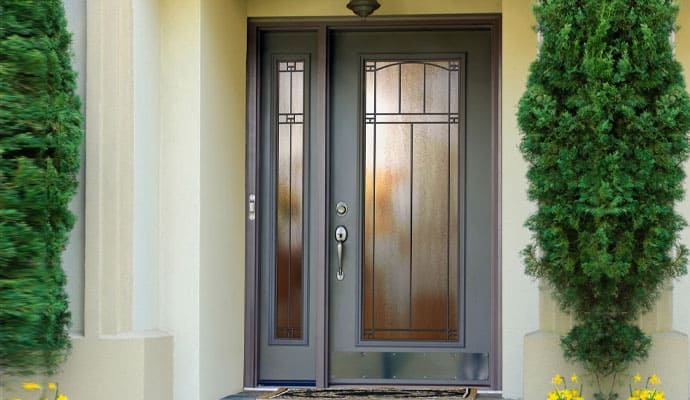
Key Features of Steel Doors vs Fiberglass
- Strength and Security: Steel doors are renowned for their security. The sturdy metal construction makes them difficult to break through, providing peace of mind for homeowners concerned about home safety.
- Cost-Effectiveness: Steel doors tend to be more affordable than fiberglass doors, making them a popular choice for budget-conscious homeowners.
- Insulation and Energy Efficiency: While not quite as efficient as fiberglass doors, steel doors offer good insulation, especially when equipped with a foam core.
- Fire Resistance: Steel is naturally resistant to fire, which can provide an extra layer of safety in case of an emergency.
Pros of Steel Doors vs Fiberglass
Steel doors also offer several advantages that make them a popular choice for homeowners. Firstly, steel doors are incredibly strong and durable. They are resistant to dents, scratches, and warping, making them an excellent choice for high-traffic areas or homes located in harsh climates. Steel doors are also fire-resistant, providing an added layer of safety.
Secondly, steel doors are highly secure. They are difficult to break through, providing enhanced protection against forced entry. Steel doors are often recommended for homeowners who prioritize security and want to deter potential intruders.
Additionally, steel doors require minimal maintenance. They do not require painting or staining, and they are easy to clean. A simple wipe down with a damp cloth is usually sufficient to keep them looking their best.
Cons of Steel Doors vs Fiberglass
Despite their numerous advantages, steel doors also have a few drawbacks. One of the main disadvantages is their susceptibility to rust. If not properly maintained, steel doors can rust over time, especially in areas with high humidity or exposure to moisture. Regular cleaning and applying a protective coating can help prevent rust and prolong the lifespan of the door.
Another drawback of steel doors is their poor insulation properties compared to fiberglass doors. Steel is a conductor of heat and cold, which can result in energy loss and higher utility bills. However, this can be mitigated by choosing a steel door with a foam core or adding weatherstripping to improve insulation.
Furthermore, steel doors may not offer as many design options as fiberglass doors. While they can be painted, the range of colors and finishes may be more limited. However, advancements in technology have allowed for the creation of steel doors with wood grain finishes, providing a more aesthetically pleasing option.
Factors to Consider When Choosing Between Fiberglass vs Steel Doors
Climate Considerations for Fiberglass vs Steel Doors
If you live in a coastal or humid region, fiberglass doors may be better due to their resistance to moisture. Steel doors, while strong, can rust over time if exposed to damp conditions.
Security Needs
If security is your top concern, steel doors offer the best protection. Their strength and resistance to forced entry make them a solid choice for homeowners focused on safety.
Maintenance Requirements
Fiberglass doors require less maintenance overall. Steel doors, while durable, need to be regularly maintained to prevent rust and keep their appearance fresh.
Budget Constraints
Steel doors are generally more affordable upfront, making them a good option for those on a tight budget. However, the long-term durability and lower maintenance costs of fiberglass doors can make them a better long-term investment.
Home Design and Aesthetics
Fiberglass doors offer more flexibility in design, making them a better choice if you’re aiming to match a specific style or color scheme in your home.
Installation of Fiberglass vs Steel Doors
How Easy Is It to Install Fiberglass Doors?
Fiberglass doors are relatively lightweight and easy to install, making them a popular DIY option.
How Easy Is It to Install Steel Doors?
Steel doors are heavier and may require professional installation, especially if you’re looking for the best fit and finish.
Longevity and Maintenance Between Fiberglass vs Steel Doors
Maintaining Fiberglass Doors
Fiberglass doors are extremely low-maintenance, only requiring occasional cleaning and refinishing.
Maintaining Steel Doors
Steel doors require more upkeep to avoid rust, especially in wetter climates. Regular painting or finishing can help extend their lifespan.
Environmental Impact for Fiberglass vs Steel Doors
Sustainability of Fiberglass Doors
Fiberglass is not biodegradable, but many manufacturers are making strides toward more sustainable production processes. Energy savings from fiberglass doors can reduce your carbon footprint over time.
Sustainability of Steel Doors
Steel doors are recyclable, making them an eco-friendly option. Their long lifespan also contributes to a lower overall environmental impact.
Best Use Cases for Fiberglass vs Steel Doors
Fiberglass Door Ideal Scenarios
- Homes in coastal or humid areas
- Homeowners seeking energy efficiency
- Those who prioritize design flexibility
Steel Door Ideal Scenarios
- Homeowners with high-security concerns
- Those seeking a budget-friendly option
- Homes in fire-prone areas
Conclusion: Choosing Between Fiberglass vs Steel Doors
In conclusion, both fiberglass doors and steel doors have their own set of advantages and disadvantages. Fiberglass doors offer durability, energy efficiency, customization options, and enhanced security. However, they can be more expensive and susceptible to scratches and fading. On the other hand, steel doors are strong, secure, cost-effective, and low maintenance. However, they can rust, have poorer insulation properties, and limited design options.
When choosing between fiberglass vs steel doors, it is important to consider your specific needs and priorities. If security and durability are your main concerns, steel doors may be the better option. If energy efficiency and customization are more important, fiberglass doors may be the way to go. Ultimately, the right door for your home will depend on your budget, climate, aesthetic preferences, and desired level of maintenance.
